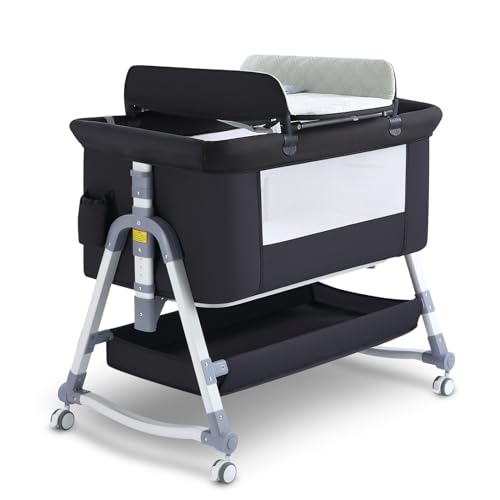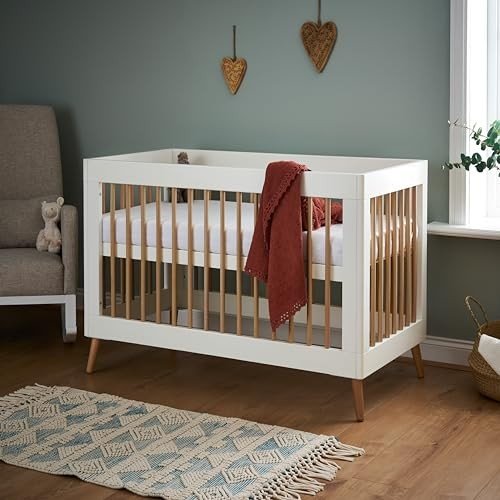The 10 Scariest Things About Baby Beds
페이지 정보

본문

Exploring the World of Baby Beds: A Comprehensive Guide for Parents
Choosing the best baby bed is among the most crucial decisions parents make throughout the early stages of their kid's life. The safety, convenience, and design of a baby bed can significantly impact a child's sleep quality and general well-being. This extensive guide intends to offer moms and dads with the necessary information needed to select the best baby bed, guaranteeing a safe and comfy sleeping environment for their little ones.
The Importance of a Safe Baby Bed
The main concern when picking a baby bed is security. According to the American Academy of Pediatrics (AAP), infants should oversleep a company, flat surface to decrease the risk of Sudden Infant Death Syndrome (SIDS). A safe baby bed must be free from soft bedding, pillows, and bumper pads, which can position suffocation dangers. Furthermore, the bed should fit the mattress comfortably to avoid any spaces where the baby might end up being trapped.
Kinds Of Baby Beds
Crib
- Description: A crib is a conventional baby bed with high sides and a fixed bottom. It is developed to supply a safe and spacious sleeping area for infants and young children.
- Pros: Sturdy and long lasting, can be utilized for numerous years, and often convertible to a young child bed or even a full-size bed.
- Cons: Can be large and hard to move, and preliminary setup may need more effort.
Cradle
- Description: A cradle is a smaller, more portable baby bed that can be positioned next to the parent's bed for simpler night feedings and bonding.
- Pros: Compact and simple to move, offers a comfortable and intimate sleeping area for the baby.
- Cons: Limited lifespan, as babies frequently outgrow cradles quickly, and may not be as sturdy as cribs.
Bassinette
- Description: A bassinette is a small, low-sided bed developed for infants up to about 6 months old. It is frequently utilized in the moms and dad's room for the first couple of months.
- Pros: Lightweight and simple to transfer, supplies a safe and close sleeping location for the baby.
- Cons: Short-lived, as babies grow out of them rapidly, and minimal storage options.
Play Yard
- Description: A play lawn is a multifunctional baby bed that can likewise serve as a play area throughout the day. It is typically collapsible and portable.
- Pros: Versatile, can be utilized in numerous settings, and provides a safe enclosed space for the baby.
- Cons: May not be as comfortable for prolonged sleeping, and the mattress is generally smaller and thinner than a crib.
Co-Sleeper
- Description: A co-sleeper is a small bed that connects to the parent's bed, permitting the baby to sleep nearby however in a separate, safe space.
- Pros: Promotes bonding and easy access for night feedings, and can be transformed to a standalone crib.
- Cons: Limited area for the baby, and may not appropriate for all bed sizes.
Key Features to Consider
When selecting a baby bed, parents must consider the following key features:
- Safety Standards: Ensure the bed meets the safety standards set by organizations such as the Consumer Product Safety Commission (CPSC) and the Juvenile Products Manufacturers Association (JPMA).
- Materials: Look for beds made from non-toxic, environmentally friendly materials, especially if the baby has sensitivities or allergic reactions.
- Toughness: Choose a bed that is sturdy and can stand up to the wear and tear of an active baby.
- Convertibility: Consider a convertible bed that can adjust to the baby's growing needs, such as a crib that can be changed into a young child bed.
- Ease of Assembly: Opt for a bed that is simple to establish and take apart, particularly if you prepare to move it often.
- Storage Options: Some baby beds feature integrated storage, which can be beneficial for keeping diapers, blankets, and toys.
- Design and Aesthetics: Choose a bed that matches the decoration of your nursery and fits your individual design.
Establishing the Baby Bed
- Bed mattress Selection: Use a firm, well-fitting mattress that leaves no gaps between the mattress and the sides of the bed.
- Bedding: Use a fitted sheet that is particularly developed for the baby's bed mattress. Prevent loose bedding, blankets, and pillows.
- Area: Place the baby bed in a well-ventilated area far from windows, cords, and other possible risks.
- Temperature: Ensure the room is at a comfortable temperature level, typically in between 68 and 72 degrees Fahrenheit.
- Tracking: Consider using a baby screen to keep an eye on your child while they sleep.
Tips for a Safe Sleeping Environment
- Back to Sleep: Always place the baby on their back to sleep to reduce the threat of SIDS.
- Avoid Overheating: Dress the baby in light, breathable clothing and avoid over-layering to prevent getting too hot.
- Keep the Bed Simple: Use just a fitted sheet and avoid adding toys, packed animals, or other soft products to the bed.
- Regular Check-Ups: Regularly check the bed for any loose parts or signs of wear and tear, and tighten up or replace as required.
Frequently asked questions
Q: When should I shift my baby from a cradle to a crib?
- A: Most babies outgrow cradles by around four to six months. Signs that it's time to transition include the baby starting to roll over, sit up, or revealing an interest in climbing out of the cradle.
Q: Are co-sleepers safe?
- A: Co-sleepers can be safe if they satisfy safety requirements and are used properly. Constantly follow the producer's guidelines and ensure there are no gaps in between the co-sleeper and the parent's cot bed sales.
Q: What should I try to find in a bassinette?
- A: Look for a bassinette that is steady, has a company mattress, and fulfills safety standards. Extra features like a detachable bassinet or a changing station can be beneficial.
Q: Can a play lawn be used as a permanent baby bed?
- A: Play yards are not advised as an irreversible baby bed due to their size and the type of mattress they use. However, they can be a great crib short-term service and are ideal for travel.
Q: How long can I utilize a convertible crib?

- A: Convertible cribs can often be used from infancy through youth. They typically transform into a young child bed and in some cases even a full-size bed, supplying years of use.
Choosing the best crib for newborn baby bed is an important action in producing a safe and comfy sleeping environment for your newborn. By thinking about the various kinds of baby beds, their crucial features, and following security standards, parents can make a notified decision that will benefit both their baby and their comfort. Whether it's a conventional crib, a cozy cradle, or a versatile play yard, the objective is to supply a space where your youngster can sleep comfortably and grow healthily.
Extra Resources
- Consumer Product Safety Commission (CPSC): For the current safety standards and remembers.
- American Academy of Pediatrics (AAP): For skilled guidance on infant sleep safety.
- Juvenile Products Manufacturers Association (JPMA): For a list of certified Baby beds, visit the up coming website, and other products.
By taking the time to research study and select the very best cheap baby cots bed, parents can ensure their child's wellness and enjoy the valuable moments of early youth with confidence and reassurance.
- 이전글You'll Never Guess This Situs Togel Terpercaya Super's Benefits 25.04.11
- 다음글Who Is Responsible For An Female Adult Toys Budget? 12 Ways To Spend Your Money 25.04.11
댓글목록
등록된 댓글이 없습니다.
